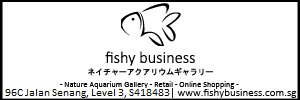It is not clear from your post, but you likely do not want both species in one tank. They will eat each others eggs, and may do some serious fin nipping.
I'd add some boiled and rinsed Jiffy (pellet) peat to the Fp. nigerianus Jos Plateau tank as a substrate or in a wide, rather shallow bowl. The mops should probably be sunken for them, as they like to spawn low. [Yes, I've seen NIG spawn in the top of floating mops, but they were queer or something.  ]
]
In the BIT tank, the mops can be floated, and a trio is plenty for a 5G tank. A 2.5G may be a bit crowded. Watch them very closely, and if you see one female spawning and the other following right behind eating each egg, don't be surprised. That's nature's way of assuring her that her rival's offspring don't interfere with her's. Remove one female if this is happening. I generally dislike spawning trios for exactly this reason. Productivity is often way lower.
Since the Fp. nigerianus Jos Plateau will get pretty big, you may want a container larger than 2.5G for them, pretty soon. I find 5G for one or two pairs idea.
The nigerianus will like their water a bit harder than the Aphyosemion bitaneatum, probably. but both are fairly tolerant of water hardness. pH is fairly meaningless. The BIT would like warmer conditions (24-26C) and may not spawn readily much below that. The NIG are more tolerant but would prefer the cooler water for spawning. Their range is wider, 20-28C.
The two species differ in that the NIG is a semi-annual, soil spawning species from the inland savanah, where the water often dries up and temp. varies much more. Their eggs are better gestated in damp peat for up to a month or so. The BIT are non-annuals from coastal streams with average warmer, often much softer, water. They are plant (mop) spawners whose eggs will water incubate in about 10 days.
I would be inclined to replace the air stones with sponge or gravel/floss filters, as heavy feeding to condition for breeding can do a number on water quality. This becomes most obvious when containers are small. Use lots of plants (and rocks or decorations?) to provide good clean water and places for the females to hide from over-eager males.
Good luck,
Wright
01 760 872-3995
805 Valley West Circle
Bishop, CA 93514 USA
]









 Reply With Quote
Reply With Quote


Bookmarks